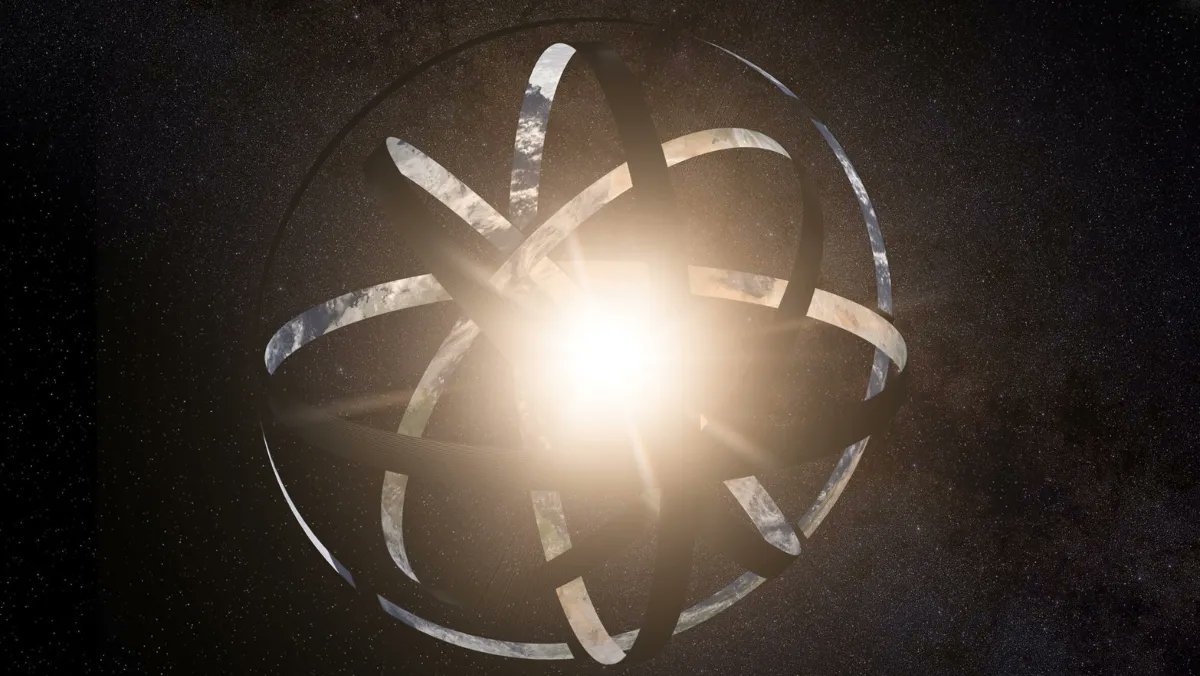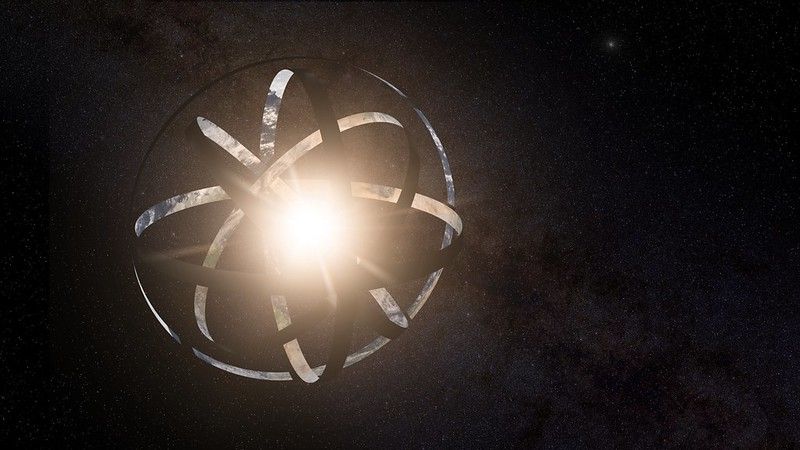Searching for Dyson spheres, rings, or swarms remains a preoccupation of many astronomers. If there are any out there, they will eventually be found, and the person or research team to do so will go down in history for making one of the most momentous discoveries in the history of humanity. If you’re interested in claiming that accolade for yourself, an excellent place to look may be around white dwarfs. At least, that’s the theory put forward in a new paper by Benjamin Zuckerman, a now-retired professor of astrophysics at UCLA.
Continue reading “If There are Dyson Spheres Around White Dwarfs, We Should be Able to Detect Them”Next Generation Telescopes Could Search for Intelligent Civilizations Directly
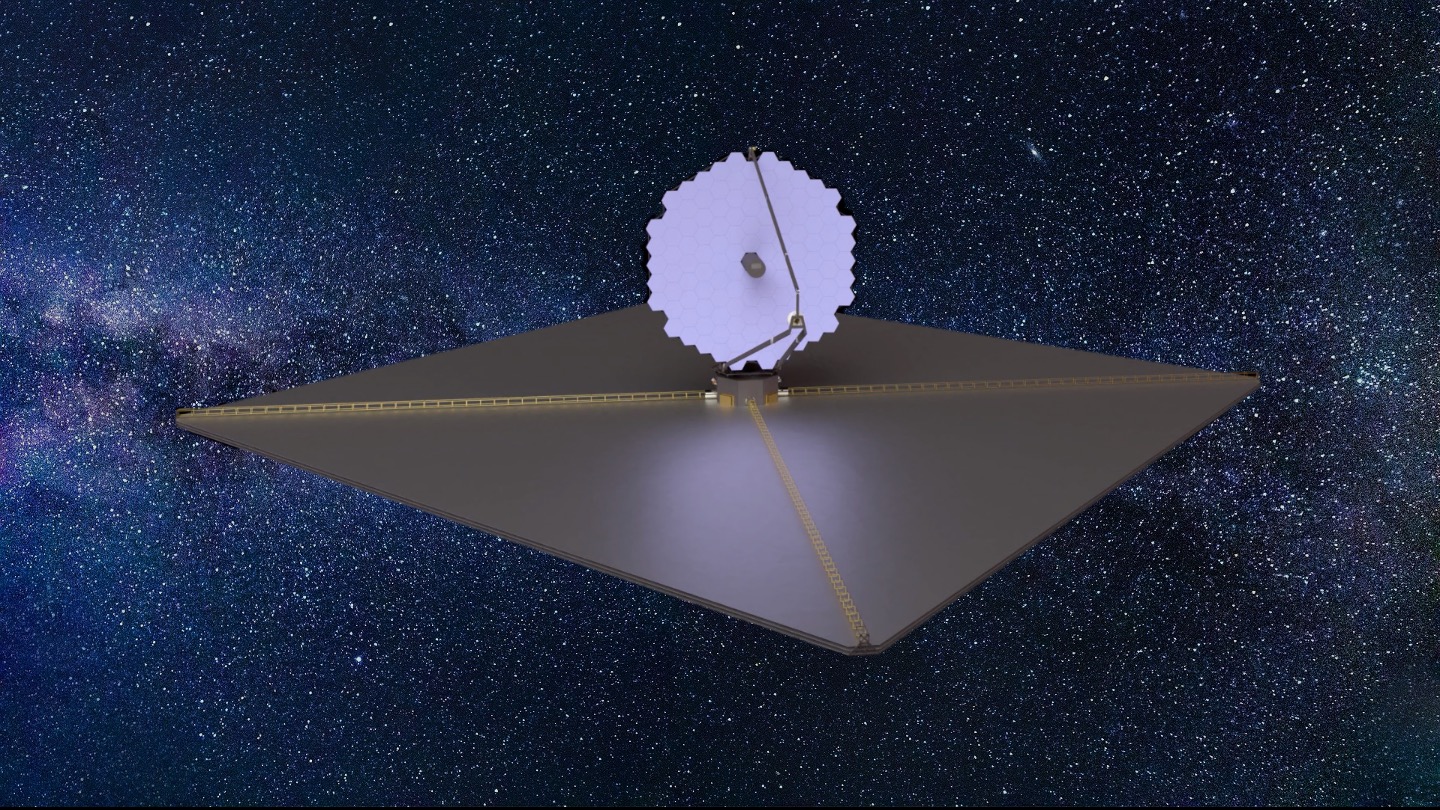
We’re still in the early days of searching for life elsewhere. The Perseverance rover is on its way to a paleo-delta on Mars to look for fossilized signs of ancient bacterial life. SETI’s been watching the sky with radio dishes, listening for signals from distant worlds. Our telescopes are beginning to scan the atmospheres of distant exoplanets for biosignatures.
Soon we’ll take another step forward in the search when new, powerful telescopes begin to search not just for life but for other civilizations.
Continue reading “Next Generation Telescopes Could Search for Intelligent Civilizations Directly”Advanced Civilizations Could be Using Dyson Spheres to Collect Energy From Black Holes. Here’s how we Could Detect Them
Black holes are more than just massive objects that swallow everything around them – they’re also one of the universe’s biggest and most stable energy sources. That would make them invaluable to the type of civilization that needs huge amounts of power, such as a Type II Kardashev civilization. But to harness all of that power, the civilization would have to encircle the entire black hole with something that could capture the power it is emitting.
Continue reading “Advanced Civilizations Could be Using Dyson Spheres to Collect Energy From Black Holes. Here’s how we Could Detect Them”Advanced Civilizations Could be Communicating with Neutrino Beams. Transmitted by Clouds of Satellites Around Neutron Stars or Black Holes
In 1960, famed theoretical physicist Freeman Dyson made a radical proposal. In a paper titled “Search for Artificial Stellar Sources of Infrared Radiation” he suggested that advanced extra-terrestrial intelligences (ETIs) could be found by looking for signs of artificial structures so large, they encompassed entire star systems (aka. megastructures). Since then, many scientists have come up with their own ideas for possible megastructures.
Like Dyson’s proposed Sphere, these ideas were suggested as a way of giving scientists engaged in the Search for Extra-Terrestrial Intelligence (SETI) something to look for. Adding to this fascinating field, Dr. Albert Jackson of the Houston-based technology company Triton Systems recently released a study where he proposed how an advanced ETI could use rely on a neutron star or black hole to focus neutrino beams to create a beacon.
Continue reading “Advanced Civilizations Could be Communicating with Neutrino Beams. Transmitted by Clouds of Satellites Around Neutron Stars or Black Holes”The Search Is On For Alien Signals Around Tabby’s Star
There’s a remote chance that inexplicable light variations in a star in the Northern Cross may be caused by the works of an alien civilization.
1,480 light years from Earth twinkles one of the greatest mysteries of recent times. There in the constellation Cygnus the Swan, you’ll find a dim, ordinary-looking point of light with an innocent sounding name — Tabby’s Star. Named for Louisiana State University astronomer Tabetha Boyajian, who was the lead author on a paper about its behavior, this star has so confounded astronomers with its unpredictable ups and downs in its brightness, they’ve gone to war on the object, drilling down on it with everything from the Hubble to the monster 393.7-inch (10-meter) Keck Telescope in Hawaii. Continue reading “The Search Is On For Alien Signals Around Tabby’s Star”
Tabby’s Star Megastructure Mystery Continues To Intrigue
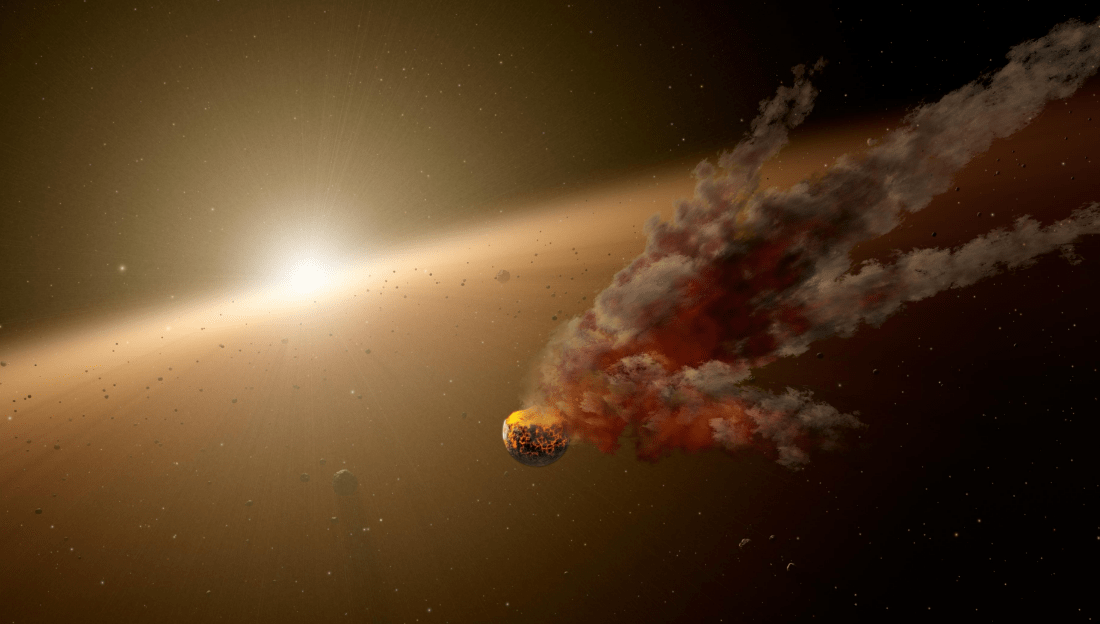
Last fall, astronomers were surprised when the Kepler mission reported some anomalous readings from KIC 8462852 (aka. Tabby’s Star). After noticing a strange and sudden drop in brightness, speculation began as to what could be causing it – with some going so far as to suggest that it was an alien megastructure. Naturally, the speculation didn’t last long, as further observations revealed no signs of intelligent life or artificial structures.
But the mystery of the strange dimming has not gone away. What’s more, in a paper posted this past Friday to arXiv, Benjamin T. Montet and Joshua D. Simon (astronomers from the Cahill Center for Astronomy and Astrophysics at Caltech and the Carnegie Institute of Science, respectively) have shown how an analysis of the star’s long-term behavior has only deepened the mystery further.
To recap, dips in brightness are quite common when observing distant stars. In fact, this is one of the primary techniques employed by the Kepler mission and other telescopes to determine if planets are orbiting a star (known as Transit Method). However, the “light curve” of Tabby’s Star – named after the lead author of the study that first detailed the phenomena (Tabetha S. Boyajian) – was particularly pronounced and unusual.
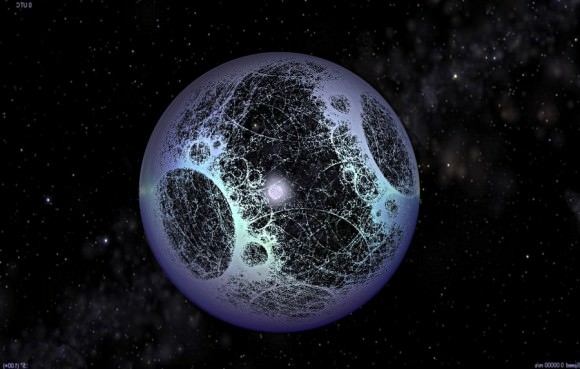
According to the study, the star would experience a ~20% dip in brightness, which would last for between 5 and 80 days. This was not consistent with a transitting planet, and Boyajian and her colleagues hypothesized that it was due to a swarm of cold, dusty comet fragments in a highly eccentric orbit accounted for the dimming.
However, others speculated that it could be the result of an alien megastructure known as Dyson Sphere (or Swarm), a series of structures that encompass a star in whole or in part. However, the SETI Institute quickly weighed in and indicated that radio reconnaissance of KIC 8462852 found no evidence of technology-related radio signals from the star.
Other suggestions were made as well, but as Dr. Simon of the Carnegie Institute of Science explained via email, they fell short. “Because the brief dimming events identified by Boyajian et al. were unprecedented, they sparked a wide range of ideas to explain them,” he said. “So far, none of the proposals have been very compelling – in general, they can explain some of the behavior of KIC 8462852, but not all of it.”
To put the observations made last Fall into a larger context, Montet and Simon decided to examine the full-frame photometeric images of KIC 8462852 obtained by Kepler over the last four years. What they found was that the total brightness of the star had been diminishing quite astonishingly during that time, a fact which only deepens the mystery of the star’s light curve.

As Dr. Montet told Universe Today via email:
“Every 30 minutes, Kepler measures the brightness of 160,000 stars in its field of view (100 square degrees, or approximately as big as your hand at arm’s length). The Kepler data processing pipeline intentionally removes long-term trends, because they are hard to separate from instrumental effects and they make the search for planets harder. Once a month though, they download the full frame, so the brightness of every object in the field can be measured. From this data, we can separate the instrumental effects from astrophysical effects by seeing how the brightness of any particular star changes relative to all its neighboring stars.”
Specifically, they found that over the course of the first 1000 days of observation, the star experienced a relatively consistent drop in brightness of 0.341% ± 0.041%, which worked out to a total dimming of 0.9%. However, during the next 200 days, the star dimmed much more rapidly, with its total stellar flux dropping by more than 2%.
For the final 200 days, the star’s magnitude once again consistent and similar to what it was during the first 1000 – roughly equivalent to 0.341%. What is impressive about this is the highly anomalous nature of it, and how it only makes the star seem stranger. As Simon put it:
“Our results show that over the four years KIC 8462852 was observed by Kepler, it steadily dimmed. For the first 2.7 years of the Kepler mission the star faded by about 0.9%. Its brightness then decreased much faster for the next six months, declining by almost 2.5% more, for a total brightness change of around 3%. We haven’t yet found any other Kepler stars that faded by that much over the four-year mission, or that decreased by 2.5% in six months.”
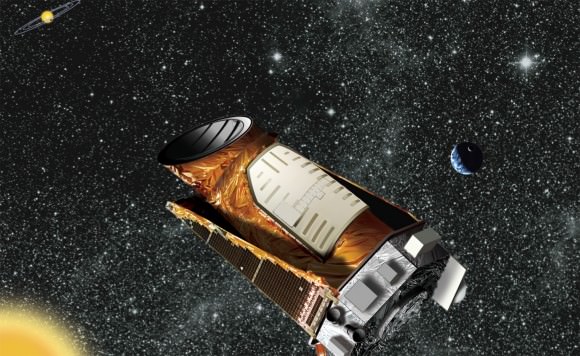
Of the over 150,000 stars monitored by the Kepler mission, Tabby’s Starr is the only one known to exhibit this type of behavior. In addition, Monetet and Cahill compared the results they obtained to data from 193 nearby stars that had been observed by Kepler, as well as data obtained on 355 stars with similar stellar parameters.
From this rather large sampling, they found that a 0.6% change in luminosity over a four year period – which worked out to about 0.341% per year – was quite common. But none ever experienced the rapid decline of more than 2% that KIC 8462852 experienced during that 200 days interval, or the cumulative fading of 3% that it experienced overall.
Montet and Cahill looked for possible explanations, considering whether the rapid decline could be caused by a cloud of transiting circumstellar material. But whereas some phenomena can explain the long-term trend, and other the short-term trend, no one explanation can account for it all. As Montet explained:
“We propose in our paper that a cloud of gas and dust from the remnants of a planetesimal after a collision in the outer solar system of this star could explain the 2.5% dip of the star (as it passes along our line of sight). Additionally, if some clumps of matter from this collision were collided into high-eccentricity comet-like orbits, they could explain the flickering from Boyajian et al., but this model doesn’t do a nice job of explaining the long-term dimming. Other researchers are working to develop different models to explain what we see, but they’re still working on these models and haven’t submitted them for publication yet. Broadly speaking, all three effects we observe cannot be explained by any known stellar phenomenon, so it’s almost certainly the result of some material along our line of sight passing between us and the star. We just have to figure out what!”
So the question remains, what accounts for this strange dimming effect around this star? Is there yet some singular stellar phenomena that could account for it all? Or is this just the result of good timing, with astronomers being fortunate enough to see a combination of a things at work in the same period? Hard to say, and the only way we will know for sure is to keep our eye on this strangely dimming star.
And in the meantime, will the alien enthusiasts not see this as a possible resolution to the Fermi Paradox? Most likely!
Further Reading: arXiv
When Will Humanity Become a Type III Civilization?
Now, I’m no futurist, but I think I can predict one thing. Humans love to use energy, and in the future, we’re going to use even more of the stuff.
Let’s hope it’s clean energy, like that handy source of photons in the sky: the Sun. Not dirty forms of energy, like screams, unobtainium, liquid Shwartz, or using humans as batteries.

Once we really get our hands on a clean, unlimited source of energy, you can expect our usage to grow and grow until every human on Earth is using as much energy as a small country.
Continue reading “When Will Humanity Become a Type III Civilization?”What Are Alien Megastructures?
Did scientists find a giant alien structure around KIC 8462852? Probably not, but if they did, what would these structures look like?
Continue reading “What Are Alien Megastructures?”
Could We Terraform the Sun?
In the list of crazy hypothetical ideas, terraforming the Sun has to be one of the top 10. So just how would someone go about doing terraforming our sun, a star, if they wanted to try?
In our series on terraforming other worlds, we’ve covered Mars, Venus, the Moon and Jupiter. Even though I solved the problem of how to terraform Jupiter (you’re welcome, science), you wanted to take things to the next level and you demanded I sort out how to terraform the Sun. Seriously? The Sun. Fine… here we go.
Let’s see what we’ve got to work with here. It’s a massive ball of plasma, containing 333,000 times more mass than the Earth. It’s about 74% hydrogen and 25% helium with a few other trace elements. There’s no solid surface to stand on it, so we need to fix that.
The average temperature on the surface of the Sun is about 5,500 Celsius, while the average temperature on Earth is about 15 C. Iron boils at only 2,800 degrees, so… that’s probably too hot. We’ll need to cool it down.
The gravity on the surface of the Sun is 28 times the gravity of Earth. If you could stand on the surface of the Sun, which you can’t, you’d be crushed flat. Okay, so we’ll add reduce the gravity… check.
There’s no breathable atmosphere, there’s no solid ground, the Sun generates deadly X-rays. Oh, and don’t forget about the terrible sunburns from the ultraviolet radiation.
So, what’s the list? Hot fire unbreathable pressure cooker goo surface gravity crushing machine. Sounds impossible, or does it?
First, the gas. As we covered in a previous episode, scientists have actually considered ways that you might extract the hydrogen and helium off of a star like the Sun, known as “stellar lifting”. There are a few ways you could work this. You could zap the surface of the Sun with a powerful laser, increasing the speed of solar wind in that area, forcing the Sun to throw its mass off into space.
Another method is to set up powerful magnetic fields around the Sun’s poles, and channel its hydrogen into jets that blast out into space. I’m not sure how you actually set up those magnetic fields, but that’s not my problem.
Once you’re done with the Sun, you’ve stripped away all its hydrogen and helium gas. What are you left with? About 5,600 times the mass of the Earth in heavier elements, like oxygen, silicon, gold, etc. Great!
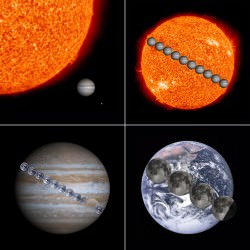
Except 5,600 sounds like a lot. Jupiter is only 316 times the mass of the Earth. We’re looking to reform a “planet” with more than 10 times the mass of Jupiter. And not only that, but we had to kill the Sun to make this work. You monsters.
This is a terrible idea. What else could we do? If you’re a science fiction fan, you’ve heard of a Dyson Sphere. If not, you’ve got some TNG to catch up on.
First proposed by Freeman Dyson, you cover an entire Sun in a metal ball. Instead of the measly amount of energy that falls on Earth, this would allow you to capture 100% of the energy released by the Sun: 384 yottawatts.
According to Dyson and a variety of matheletes, you could dismantle all planets in the Solar System and build a sphere at a distance of 1 Earth radii at 8 to 20 centimeters thick. That would give you a surface area 550 million times more than the Earth.
Although, building an actual rigid sphere is probably unfeasible because it would be pretty unstable and eventually collapse. It probably makes more sense to build a swarm of satellites surrounding the Sun, capturing its energy.
We did a whole video on Dyson Spheres. Check it out here.
So there you go. I just terraformed the Sun. I’m terrified about your next suggestion: how could you terraform a black hole? I guess that’ll be the next video.
Would you like to live on my imagined terraformed Sun? If not, what about a Dyson Sphere or swarm?
100,000 Galaxies, and No Obvious Signs of Life
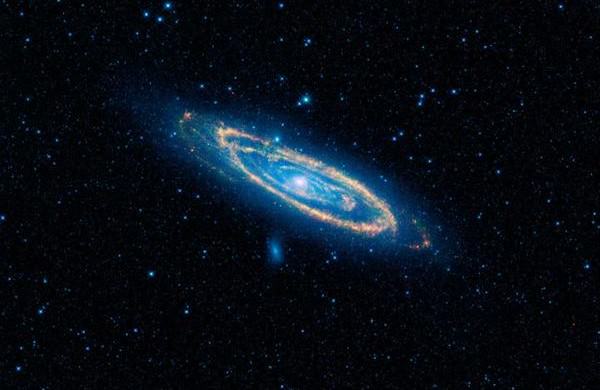
Beam us up, Scotty. There’s no signs of intelligent life out there. At least, no obvious signs, according to a recent survey performed by researchers at Penn State University. After reviewing data taken by the NASA Wide-field Infrared Survey Explorer (WISE) space telescope of over 100,000 galaxies, there appears to be little evidence that advanced, spacefaring civilizations exist in any of them.
First deployed in 2009, the WISE mission has been able to identify thousands of asteroids in our solar system and previously undiscovered star clusters in our galaxy. However, Jason T. Wright, an assistant professor of astronomy and astrophysics at the Center for Exoplanets and Habitable Worlds at Penn State University, conceived of and initiated a new field of research – using the infrared data to assist in the search for signs of extra-terrestrial civilizations.
And while their first look did not yield much in the way of results, it is an exciting new area of research and provides some very useful information on one of the greatest questions ever asked: are we alone in the universe?
“The idea behind our research is that, if an entire galaxy had been colonized by an advanced spacefaring civilization, the energy produced by that civilization’s technologies would be detectable in mid-infrared wavelengths,” said Wright, “exactly the radiation that the WISE satellite was designed to detect for other astronomical purposes.”
This logic is in keeping with the theories of Russian astronomer Nikolai Kardashev and theoretical physicist Freeman Dyson. In 1964, Kardashev proposed that a civilization’s level of technological advancement could be measured based on the amount of energy that civilization is able to utilize.

To characterize the level of extra-terrestrial development, Kardashev developed a three category system – Type I, II, and III civilizations – known as the “Kardashev Scale”. A Type I civilization uses all available resources on its home planet, while a Type II is able to harness all the energy of its star. Type III civilizations are those that are advanced enough to harness the energy of their entire galaxy.
Similarly, Dyson proposed in 1960 that advanced alien civilizations beyond Earth could be detected by the telltale evidence of their mid-infrared emissions. Believing that a sufficiently advanced civilization would be able to enclose their parent star, he believed it would be possible to search for extraterrestrials by looking for large objects radiating in the infrared range of the electromagnetic spectrum.
These thoughts were expressed in a short paper submitted to the journal Science, entitled “Search for Artificial Stellar Sources of Infrared Radiation“. In it, Dyson proposed that an advanced species would use artificial structures – now referred to as “Dyson Spheres” (though he used the term “shell” in his paper) – to intercept electromagnetic radiation with wavelengths from visible light downwards and radiating waste heat outwards as infrared radiation.
“Whether an advanced spacefaring civilization uses the large amounts of energy from its galaxy’s stars to power computers, space flight, communication, or something we can’t yet imagine, fundamental thermodynamics tells us that this energy must be radiated away as heat in the mid-infrared wavelengths,” said Wright. “This same basic physics causes your computer to radiate heat while it is turned on.”

However, it was not until space-based telescopes like WISE were deployed that it became possible to make sensitive measurements of this radiation. WISE is one of three infrared missions currently in space, the other two being NASA’s Spitzer Space Telescope and the Herschel Space Observatory – a European Space Agency mission with important NASA participation.
WISE is different from these missions in that it surveys the entire sky and is designed to cast a net wide enough to catch all sorts of previously unseen cosmic interests. And there are few things more interesting than the prospect of advanced alien civilizations!
To search for them, Roger Griffith – a postbaccalaureate researcher at Penn State and the lead author of the paper – and colleagues scoured the entries in the WISE satellites database looking for evidence of a galaxy that was emitting too much mid-infrared radiation. He and his team then individually examined and categorized 100,000 of the most promising galaxy images.
And while they didn’t find any obvious signs of a Type II civilization or Dyson Spheres in any of them, they did find around 50 candidates that showed unusually high levels of mid-infrared radiation. The next step will be to confirm whether or not these signs are due to natural astronomical processes, or could be an indication of a highly advanced civilization tapping their parent star for energy.
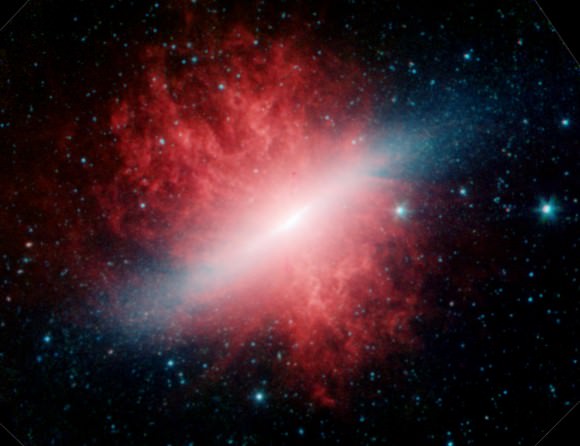
In any case, the team’s findings were quite interesting and broke new ground in what is sure to be an ongoing area of research. The only previous study, according to the G-HAT team, surveyed only about 100 galaxies, and was unable to examine them in the infrared to see how much heat they emitted. What’s more, the research may help shed some light on the burning questions about the very existence of intelligent, extra-terrestrial life in our universe.
“Our results mean that, out of the 100,000 galaxies that WISE could see in sufficient detail, none of them is widely populated by an alien civilization using most of the starlight in its galaxy for its own purposes,” said Wright. “That’s interesting because these galaxies are billions of years old, which should have been plenty of time for them to have been filled with alien civilizations, if they exist. Either they don’t exist, or they don’t yet use enough energy for us to recognize them.”
Alas, it seems we are no closer to resolving the Fermi Paradox. But for the first time, it seems that investigations into the matter are moving beyond theoretical arguments. And given time, and further refinements in our detection methods, who knows what we might find lurking out there? The universe is very, very big place, after all.
The research team’s first research paper about their Glimpsing Heat from Alien Technologies Survey (G-HAT) survey appeared in the Astrophysical Journal Supplement Series on April 15, 2015.
Further Reading: Astrophysical Journal via EurekAlert, JPL-NASA

